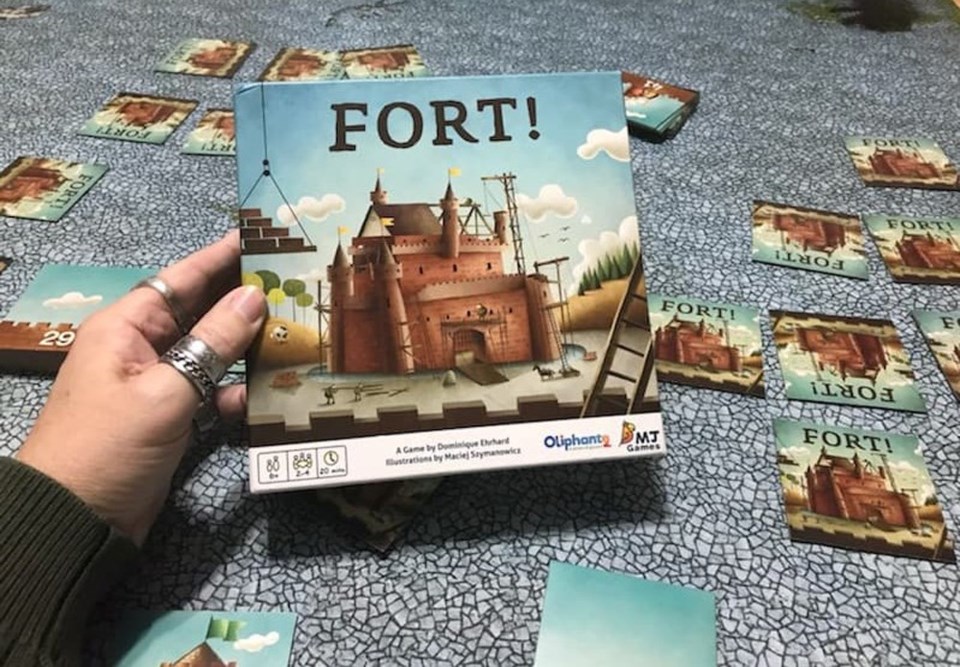YORKTON - Sometimes a game comes in a rather smallish, unassuming box. It’s not a particularly well-hyped game. It’s not on a ‘must-have’ list.
So when you crack the cellophane and take it to the table, you are very much on a journey of discovery – knowing little about the game pre-first-play.
Such was the case with Fort, originally released in Europe in 2015 from designer Dominique Ehrhard.
Fort has a look of a children’s game, the pieces are thick cardboard cut large, with art very much of a cartoon nature.
But, being a game reliant entirely on memory, it’s not exactly for young children, at least without a helpful older sibling or adult on hand to offer some help.
The game plays simple enough, the pieces are spread out on the table face down. Note you will need some serious table room because the 45 tiles are large.
In Fort players are trying to build a fort wall of 10 tiles. With each tile numbered 1-45, the pieces in the wall must be built in order, the lowest number starting the wall, and progressing as the game develops.
So if you start your wall with 10, you can’t then add tiles one-to-nine to the wall.
Players then take turns selecting a tile, showing it to others, and either placing it in their wall, or you replace it face down, where any player can select it on a subsequent turn. That is where a good memory is helpful, recalling where certain numbers you can use have already been revealed.
In the basic game that’s it. The first player to lay out 10 tiles wins.
There is a variant, advanced ruleset, which you might as well start with, because even with a little added spice the game is simple.
The key difference is that first to 10 tiles ends the game but the winner is the player whose tiles add up to the highest score, which creates a bit more strategy.
Also, some of the tiles, in addition to the number, have some art included; a king, queen, prince, princess, ravens, cannon, tower and wizard. Each has a special rule attached to it.
For example, when a cannon is selected you can remove one piece from an opponent’s wall.
Of course if a player has a tower it protects tiles between towers from cannon fire.
King and queen tiles add three points to a player’s score, prince and princess one point each, or three as a pair, while ravens are worth one point each.
The wizard allows a player to add any tile into their wall, once. So you can go back and insert one into the sequence.
The extra points are especially game changing, but the wizard and cannon are at least fun additions.
While not the deepest game, it was fun for a play, or two, and will be a good filler game, although admittedly those at our table are not huge memory game fans.
Where Fort can shine would be for a family with children seven-plus, or at play schools looking to teach memory and numbers, or perhaps for seniors, as a tool to keep the mind sharp. Even on our shelf it is one that while simple, was a surprise in how neatly it played. Check it out at www.mjgames.ca






